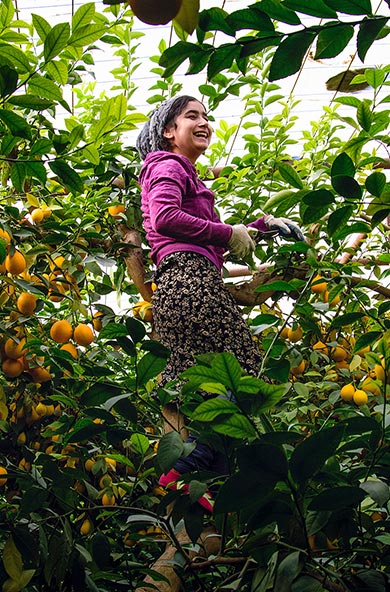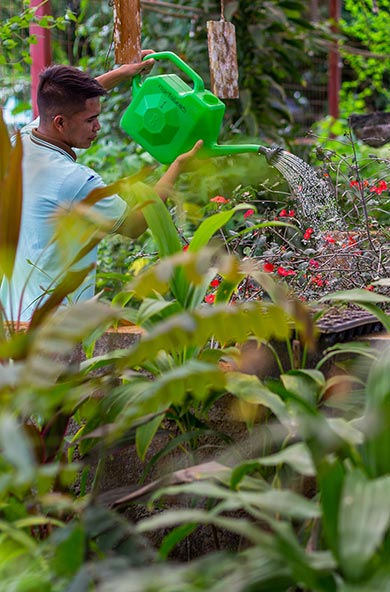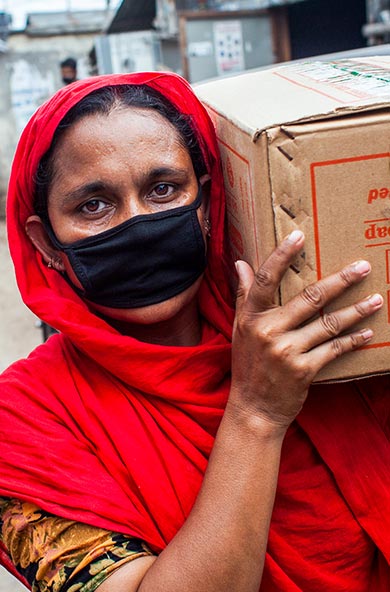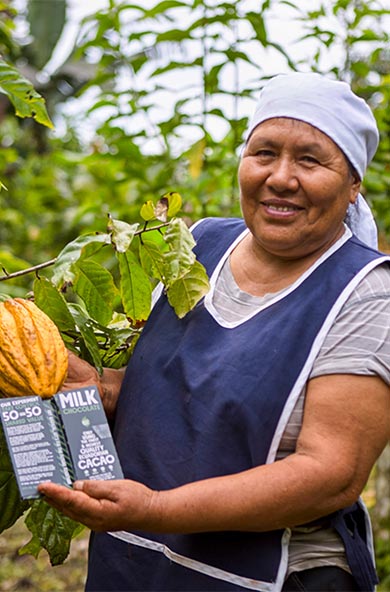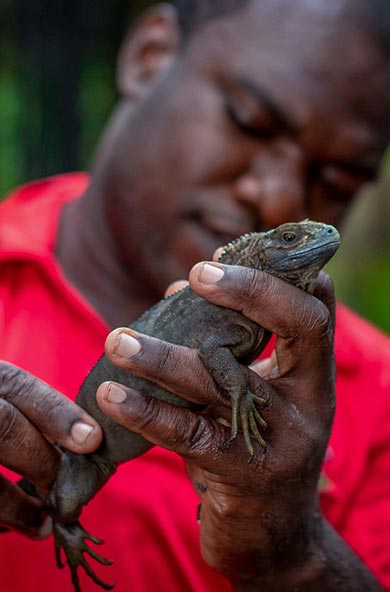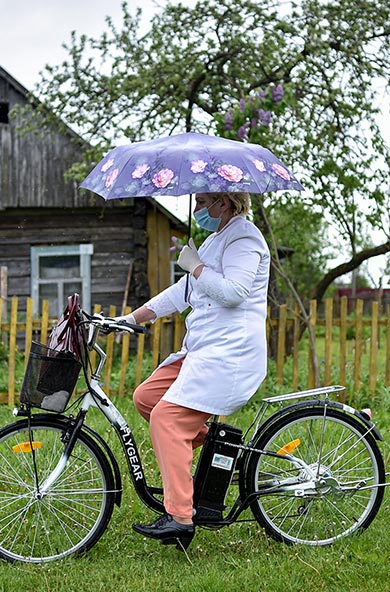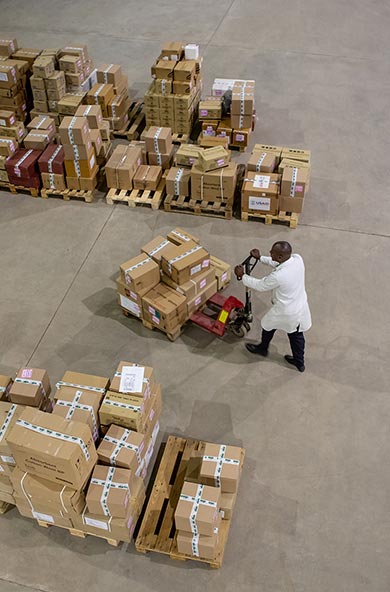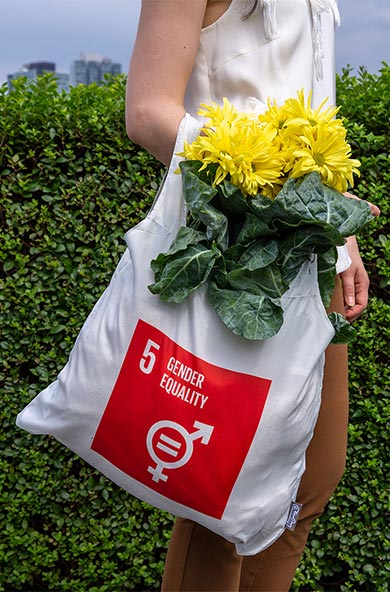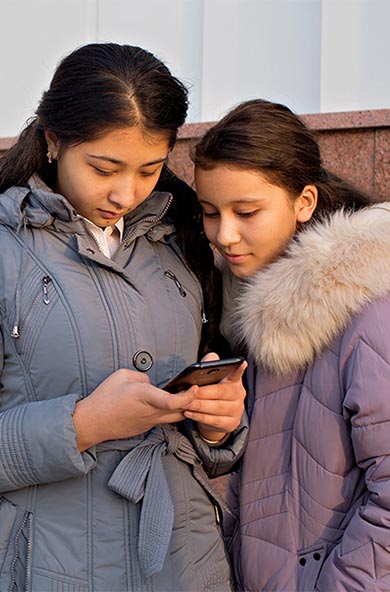A nudge, in the words of economist Richard Thaler and legal scholar Cass Sunstein, is “any aspect of the choice architecture that alters people's behaviour in a predictable way without forbidding any options or significantly changing their economic incentives”. Sounds complex, but a nudge can be something as simple as placing hand sanitizer dispensers in more accessible spots or drawing attention to them through visual cues. Behavioural insights are the findings that inform how nudges are designed.
In the Arab region, behavioural insights have been a long-standing favourite in UNDP’s innovation toolbox. Now, UNDP country offices are looking to them to inform their responses to COVID-19. UNDP Sudan is running a range of perception surveys to better understand consumer behaviour and will use these findings among others to develop messages to limit panic buying. UNDP Egypt is partnering with telecommunication companies to send out SMS messages to encourage good hygiene, physical distancing, countering the spread of misinformation, and staying at home. What these interventions recognize is that information and awareness are crucial, but in and of themselves may not be as effective as we would hope. Making sure we respond to people’s inherent cognitive biases matters, particularly in the midst of an “infodemic” that makes it difficult for people to distinguish reliable information.
Insights from a tele-brainstorm
UNDP’s Youth Leadership Programme (YLP), now in its sixth year, aims to empower young people as changemakers. With the onset of the pandemic, YLP shifted its training entirely online and has been introducing COVID-19 related content in recognition of the impact of the crisis on young people, and also of their crucial role as innovators.
YLP’s foundational methodology has been design thinking, a problem-solving approach that places the people we design for at the centre of the process and supports them in creating solutions. Design thinking and behavioural insights have much in common. They both look closely at the user, and their journey with a product or service, to understand the hindrances that arise.
As part of its series of learning webinars, YLP thought it pertinent, then, to introduce its community to behavioural insights with the help of Dr Fadi Makki, a pioneer in the application of behavioural economics to public policy in the Middle East. We invited him and his colleagues from Nudge Lebanon and B4Development to collaborate with our community of about 70 partners to think through COVID-19 related behavioural barriers and possible nudges, with a focus on young people, and hand washing, physical distancing, and self-isolation. In addition to several non-behavioural barriers, such as limited availability of water and soap, the behavioural barriers and biases that came out most strongly were the following:
- An “optimism bias” that leads to an underestimation of the risk posed by the virus, particularly where there are no reported cases in one’s own community.
- There are misunderstandings that exposure to the virus will strengthen one’s immune system, that it’s “just a flu”, or, particularly among young people, that they are strong enough to handle it. This “overconfidence effect” is combined with a lack of attention to guidance on the importance of washing hands thoroughly and for a minimum of 20-30 seconds.
- As one of the more socially active age groups, young people find it particularly difficult to give up on outings with their friends. This could be seen as a “status quo bias,” an aversion to change in one’s existing lifestyle.
- Among those working under precarious conditions or without social protection, the immediate gain of continuing to receive an income, even at the risk of exposure to the virus, may be valued far more than possible intangible gains, such as being able to return to income-generating and social activities sooner if everybody complied with restrictions. This is known by behavioural scientists as “present bias,” a strong preference for immediate gains over potentially larger gains in the future.
- A fear of being ridiculed for showing concern about the virus or abiding by restrictions.
- There may be feelings of resignation among some who view the virus as God’s will.
- COVID-19 may seem like a marginal challenge within the daily realities of the millions of refugees and displaced people living in camps.
So what kinds of behavioural tips did our youth leaders come up with?
1. Use influencers and community leaders to deliver messages more impactfully. UNDP Somalia has mobilized its community of storytellers to produce videos, animations and photos that are informing the public about how to protect themselves and others from infection. UNDP Lebanon has called on YLP alumni to record “how-to” videos on handwashing, and to encourage a sense of responsibility towards others. These initiatives are helping to localize key messages, to brand desirable behaviour as the social norm, and to make the threat more palpable. This is known as the “bandwagon effect” – if we perceive that others are increasingly engaging in a behaviour, we become more likely to do so ourselves.
2. Evoke emotion, create a sense of pride around helping to protect one’s family and community. This appeals to the “affect heuristic”, where our decisions are driven by our emotions, even when we think we are motivated by logic.
3. Remind people of what they can do from home, including e-services and the various ways to connect with friends virtually. Reminders give salience to the right behaviour and have been shown to be effective nudges.
Public behaviour compliant with WHO guidance has been recognized as a critical element in reducing virus transmission. Behavioural insights can complement more restrictive policy measures with a deeper understanding of how people make decisions.
Co-authored by the Innovation and Youth Teams at the UNDP Regional Hub for the Arab States, Nudge Lebanon, and B4Development.
For more inspiration on designing behavioural interventions, take a look at Nudge Lebanon’s SHAPE DIFFERENCE framework.

 Locations
Locations